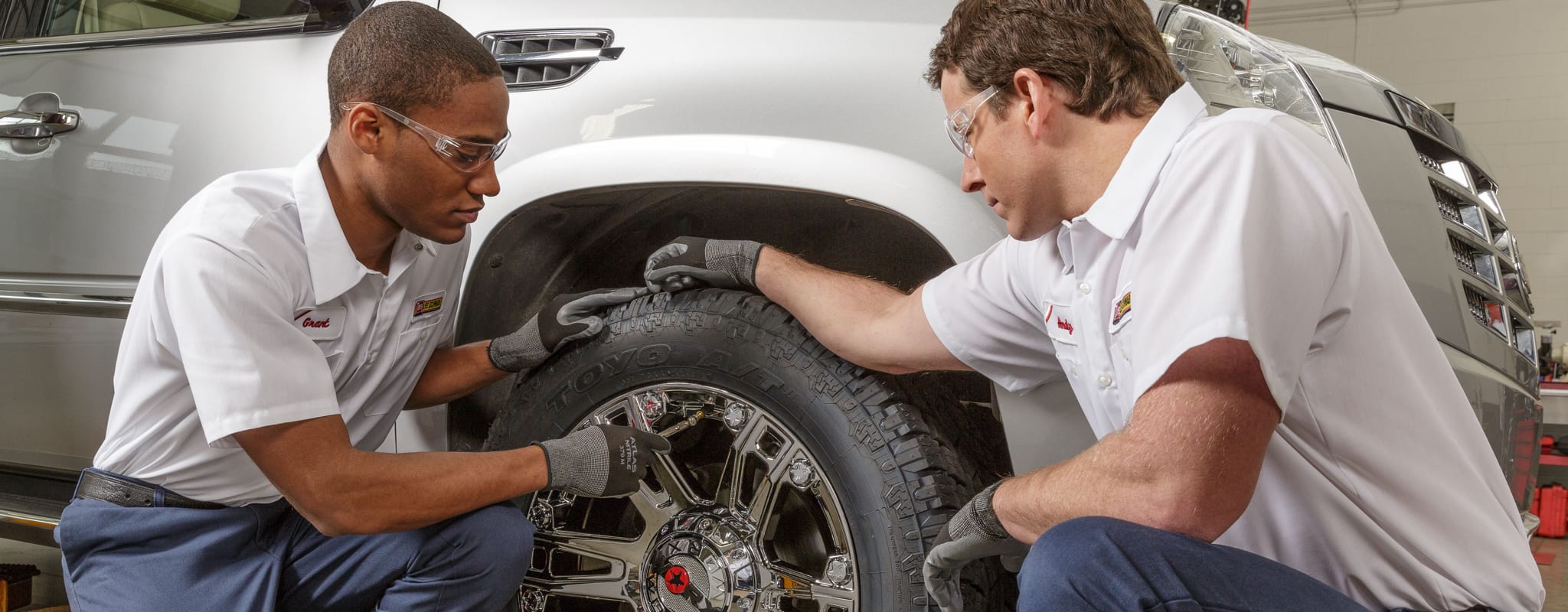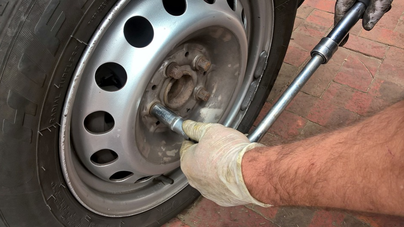Keep Rolling Properly: GMC Tires Service by Morris Tires
Keep Rolling Properly: GMC Tires Service by Morris Tires
Blog Article
Tire Solution: The Impact of Climate Condition
When it comes to guaranteeing optimal efficiency and security on the roadway, understanding the effect of climate conditions on tire service is crucial. GMC Tire Service. In this discussion, we will certainly explore the complex relationship in between weather condition problems and tire solution, dropping light on the relevance of weather-specific tire upkeep methods and considerations.
Warm and Tire Efficiency
When subjected to heats, tires experience adjustments in performance that can dramatically influence car security and handling. The warmth produced from long term driving or heat conditions creates the tire rubber to soften, bring about reduced walk life and boosted wear. As the rubber becomes softer, the tire's grasp on the roadway diminishes, affecting stopping distances and total traction. In extreme instances, too much warm can even create tire blowouts, posing an extreme safety danger to the car and its owners.

Cold Climate Results
Cold climate conditions can have a significant influence on tire efficiency and safety. As temperature levels drop, tire rubber can harden, causing decreased grip on icy or snow-covered roads. In chilly weather condition, tires may also lose atmospheric pressure more swiftly, which can impact managing and fuel efficiency. Furthermore, cool temperatures can cause tire sidewalls to stiffen, boosting the danger of damage from potholes or other road dangers.
To minimize the effects of cool climate on tires, it is important to regularly examine tire pressure and inflate them to the maker's suggested degrees. Using winter months or all-season tires developed for cold weather condition problems can also improve traction and grip on icy or snowy roadways. Appropriate tire upkeep, consisting of normal evaluations for wear and damage, becomes a lot more crucial throughout chillier months to make certain optimal efficiency and safety and security.
Rainy Issues Effect
Tires with worn-out treads are a lot more prone to hydroplaning, where a layer of water constructs up in between the tire and the road surface area, leading to loss of traction. To combat this, vehicle drivers must frequently check their tires for appropriate walk depth and think about investing in tires specifically made for wet conditions.
Furthermore, wet weather condition can additionally lower presence, making it testing for motorists to see the road ahead plainly (GMC Tire Service). In such conditions, it is vital to adjust driving speeds accordingly and maintain a safe adhering to distance to permit for unexpected stops. Appropriately inflated tires can likewise assist in maintaining control on wet roads by providing far better handling and grip
Snow and Tire Safety
Snow-covered roads present special difficulties for motorists, highlighting the importance of proper tire choice and maintenance. When driving in snowy conditions, having the right tires can make a significant distinction in safety and efficiency. Wintertime tires are designed with unique rubber compounds and step patterns to provide better traction on snow and ice contrasted to all-season tires. The much deeper treads and sipes of winter tires help grasp the road much better, minimizing the danger of sliding and slipping.

Moreover, drivers need to think about mounting tire chains in severe snowy problems. Tire chains provide additional grip by grasping the snow and ice, enhancing security and control. Nonetheless, it is necessary to follow producer guidelines when mounting and making use of tire chains to avoid damage to the tires and vehicle. By selecting the best tires, maintaining appropriate inflation, and thinking about additional grip aids like tire chains, vehicle drivers can enhance their safety and security when navigating snow-covered roadways.
Weather-Related Tire Maintenance
When confronted with various weather condition problems, correct tire upkeep comes to be a critical aspect of vehicle safety and efficiency. Weather-related tire upkeep encompasses an array of techniques intended at making certain ideal tire feature and long life in various weather circumstances. One essential aspect of weather-related tire maintenance is tire pressure policy. Varying temperature levels can create tire pressure to differ, affecting traction and fuel effectiveness. On a regular basis checking and adjusting tire stress according to supplier recommendations is essential for risk-free driving in altering climate condition. In addition, tire step deepness plays a substantial duty in managing various climate components. Tires with sufficient walk deepness provide better special info grip on damp or icy roads, reducing the risk of skidding or hydroplaning. When step wear gets to a specific deepness is crucial for preserving YOURURL.com traction and stability in unfavorable weather, examining tire step frequently and replacing tires. By focusing on weather-related tire maintenance, chauffeurs can improve safety, boost automobile efficiency, and prolong the life-span of their tires.
Conclusion
Finally, climate condition have a considerable effect on tire efficiency and security. From heat affecting tire stress and put on to chilly climate lowering traction, it is vital to think about the weather when preserving and making use of tires. Stormy conditions can lower grasp and cause hydroplaning, while snow can increase the risk of crashes if tires are not effectively outfitted. Weather-related tire upkeep is important in making certain optimum efficiency and security when traveling.
In this conversation, we will discover the elaborate relationship in between weather problems and tire service, dropping light on the relevance of weather-specific tire upkeep techniques and considerations.

Report this page